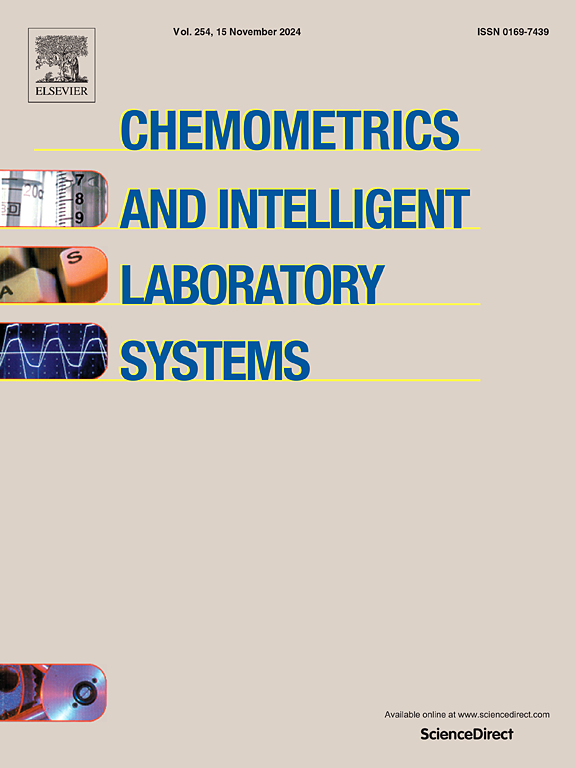用于半监督软传感器建模的正交长短时记忆自编码器
IF 3.8
2区 化学
Q2 AUTOMATION & CONTROL SYSTEMS
Chemometrics and Intelligent Laboratory Systems
Pub Date : 2025-07-29
DOI:10.1016/j.chemolab.2025.105499
引用次数: 0
摘要
数据驱动的软测量方法被广泛应用于预测工业生产过程中难以测量的变量。然而,在实际应用中,标记样品的数量是有限的,这将影响开发的软传感器的精度。针对这一点,提出了将无监督特征提取和有监督映射相关性建立相结合的半监督软测量方法。自动编码器(AE)是一种常用的特征提取方法,可以有效地从未标记的数据中捕获过程的非线性特征。由于典型的ae对潜在空间的输出没有特殊的约束,因此提取的特征之间可能存在冗余,这将增加映射相关性建立的复杂性。同时,典型声发射难以提取过程的动态特征。这两个问题都可能影响软传感器的性能。为了解决这些问题,本文提出了一种正交长短期记忆自动编码器(OLAE)。通过在长短期记忆自编码器的损失函数中加入潜在空间输出的正交约束,可以得到正交动态特征。然后,在特征提取阶段使用OLAE。利用查特吉新系数,筛选出与难以测量变量相关的正交特征,建立映射相关性。考虑到标记数据样本数量有限,建立了基于支持向量回归的预测模型,实现了对难以测量变量的预测。通过对青霉素发酵过程和工业裂解炉的数据进行研究,以评价所提出的软测量方法的有效性。本文章由计算机程序翻译,如有差异,请以英文原文为准。
Orthogonal long short-term memory autoencoder for semi-supervised soft sensor modeling
Data-driven soft sensor methods are popularly applied to predict hard-to-measure variables in industrial production processes. However, in practice, the number of labeled samples is limited, which will affect the accuracy of developed soft sensors. Aiming at this point, semi-supervised soft sensor methods are proposed that combine unsupervised feature extraction and supervised mapping correlation establishment. Auto encoder (AE) is a commonly used feature extraction method for effectively capturing the nonlinear features of processes from unlabeled data. Since typical AEs have no special constraints on the output of latent space, there could be redundancy among the extracted features, which will increase the complexity of mapping correlation establishment. Meanwhile, the dynamic features of processes are difficult to extract by typical AE. Both issues could affect the performance of soft sensors. To address these issues, an Orthogonal Long Short-Term Memory Auto encoder (OLAE) is proposed in this work. By adding the orthogonal constraint on latent space output to the loss function of Long Short-Term Memory Auto encoder, orthogonal dynamic features can be obtained. Then, the OLAE is employed in the feature extraction stage. Using Chatterjee's New Coefficient, orthogonal features related to hard-to-measure variables are screened out for mapping correlation establishment. Considering the limited number of labeled data samples, a prediction model based on support vector regression is established to realize the prediction of hard-to-measure variables. Data from a penicillin fermentation process and an industrial cracking furnace are investigated to evaluate the effectiveness of the proposed soft sensor method.
求助全文
通过发布文献求助,成功后即可免费获取论文全文。
去求助
来源期刊
CiteScore
7.50
自引率
7.70%
发文量
169
审稿时长
3.4 months
期刊介绍:
Chemometrics and Intelligent Laboratory Systems publishes original research papers, short communications, reviews, tutorials and Original Software Publications reporting on development of novel statistical, mathematical, or computer techniques in Chemistry and related disciplines.
Chemometrics is the chemical discipline that uses mathematical and statistical methods to design or select optimal procedures and experiments, and to provide maximum chemical information by analysing chemical data.
The journal deals with the following topics:
1) Development of new statistical, mathematical and chemometrical methods for Chemistry and related fields (Environmental Chemistry, Biochemistry, Toxicology, System Biology, -Omics, etc.)
2) Novel applications of chemometrics to all branches of Chemistry and related fields (typical domains of interest are: process data analysis, experimental design, data mining, signal processing, supervised modelling, decision making, robust statistics, mixture analysis, multivariate calibration etc.) Routine applications of established chemometrical techniques will not be considered.
3) Development of new software that provides novel tools or truly advances the use of chemometrical methods.
4) Well characterized data sets to test performance for the new methods and software.
The journal complies with International Committee of Medical Journal Editors'' Uniform requirements for manuscripts.

 求助内容:
求助内容: 应助结果提醒方式:
应助结果提醒方式:


